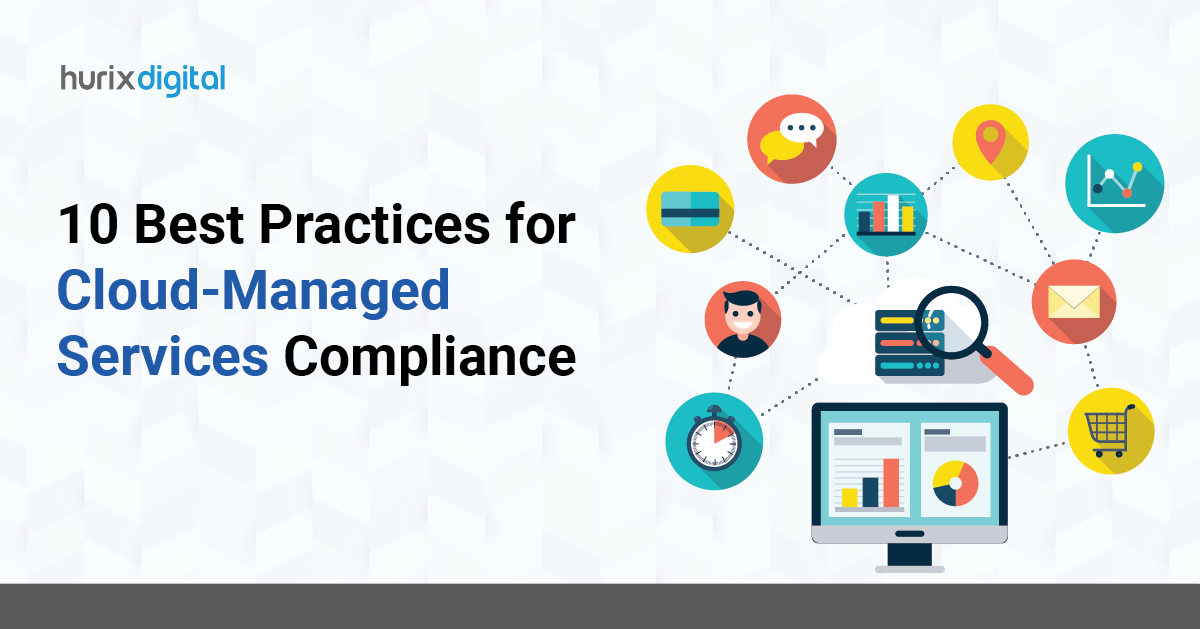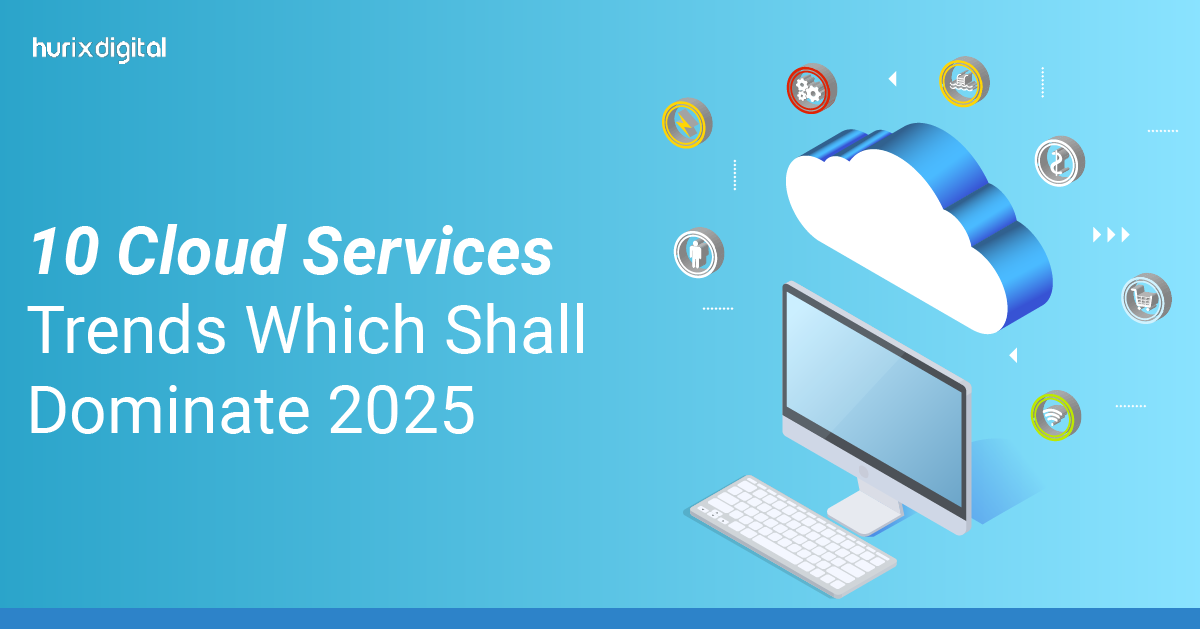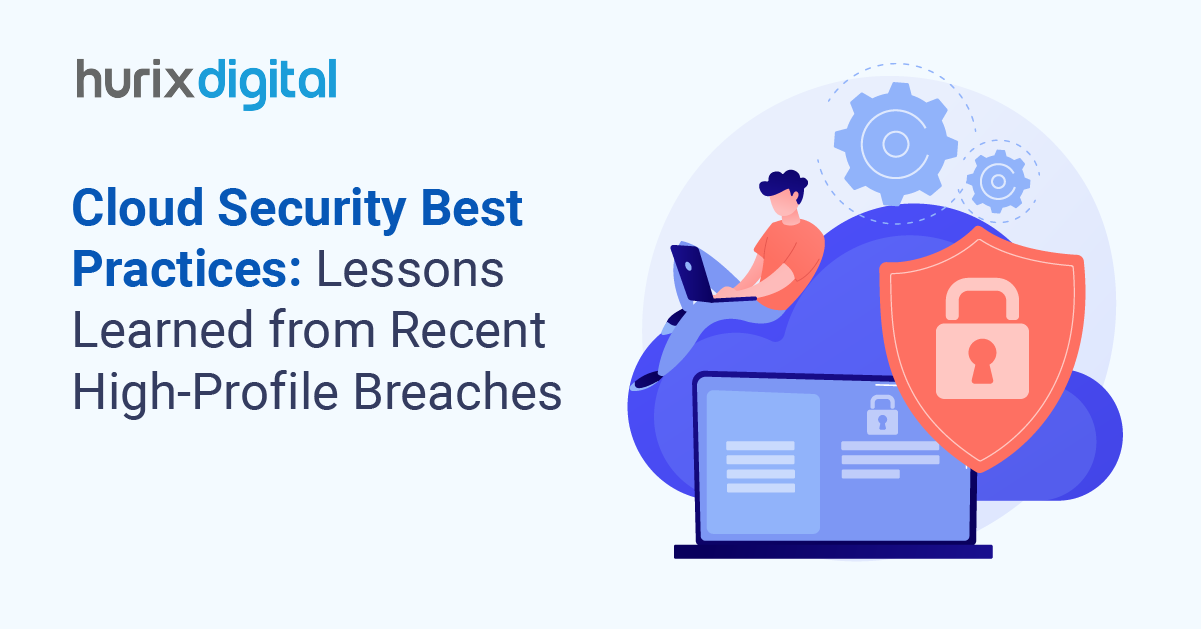
Best Practices for Cloud-Managed Services Compliance
Summary
This blog covers key compliance challenges for IT project managers in cloud services, including GDPR, PCI DSS, ISO standards, and best practices for regulatory compliance.
When implementing cloud-managed services, IT project managers must navigate a complicated regulatory environment. Cloud computing presents major compliance problems, particularly concerning handling sensitive data and contractual duties, even as it provides unparalleled flexibility, cost-effectiveness, and scalability for transferring important workloads.
Traditional on-premises arrangements give businesses complete control over their technology, data, and infrastructure. However, many of these duties are delegated to cloud service providers (CSPs) in a cloud context. Businesses need to make sure their cloud strategy complies with strict industry standards and compliance regulations, even though CSPs handle infrastructure management.
This guide covers key compliance considerations for IT project managers leveraging cloud services, providing essential insights to navigate these challenges effectively.
Table of Contents:
- What is Cloud Regulatory Compliance?
- Common Cloud Compliance Requirements
- Importance of Compliance in Cloud-Managed Services
- Key Cloud Compliance Challenges
- Best Practices for Cloud Regulatory Compliance
- Wrapping Up
What is Cloud Regulatory Compliance?
Regulatory compliance refers to the adherence to laws, regulations, and industry-specific standards when using cloud-managed services.
Moving to the cloud necessitates moving data and adapting business processes. Organizations should evaluate compliance implications so that their existing policies support cloud operations.
Some of these requirements come from internal governance frameworks, customer commitments, and external regulations, which vary with location, industry, and type of data.
To remain compliant, organizations need to constantly apply strong security measures and perform regular audits that comply with established standards governing clouds.
Also Read: Streamlining DevOps with Integrated Cloud Management Solutions
Common Cloud Compliance Requirements
Several regulations provide standards and best practices for secure data handling in the cloud, guiding cloud compliance initiatives.
Some of the common cloud computing frameworks include:
1. General Data Protection Regulation (GDPR)
GDPR unites and reinforces data protection laws under the European Economic Area (EEA). It is relevant to organizations globally when they deal with EEA personal data. Penalties due to noncompliance may be substantially high, making adherence indispensable for data security and privacy.
2. FedRAMP, the Federal Risk and Authorization Management Program
FedRAMP makes it easier for the US government to standardize security assessment, approval, and ongoing oversight of cloud services. For cloud service providers to satisfy the stringent regulations established by government authorities, this must be followed.
3. Health Insurance Portability and Accountability Act (HIPAA)
Any U.S. organization handling sensitive patient data is required by HIPAA to protect it. Clinics, hospitals, insurance companies, and their representatives are all covered by this. Respecting HIPAA when it comes to cloud computing will prevent unauthorized individuals from accessing patient data.
4. ISO 27000 Series
This series comprises standards providing guidelines on information security management, including cloud-specific controls. Although it is not obligatory, complying with ISO 27000 boosts confidence, decreases risks, and facilitates compliance with other data protection laws.
5. Payment Card Industry Data Security Standard (PCI DSS)
PCI DSS determines security requisites for organizations that process card payments. In the cloud, compliance involves certain measures that shield dynamic and scalable structures from unlawful access.
Importance of Compliance in Cloud-Managed Services
Compliance in cloud-managed services is important for protecting sensitive data and maintaining trust. Organizations handle vast amounts of data, including financial records, intellectual property, and personal information, that must be protected against breach risks.
Regulations governing this type of protection, secrecy, and manner of operation are established by regulations such as GDPR, PCI-DSS, and HIPAA.
There may be severe consequences for breaking these rules, such as hefty fines, legal action, and reputational damage.
It is therefore important for companies to prioritize compliance to reduce the risk factors involved and safeguard their resources.
Key Cloud Compliance Challenges
Ensuring compliance in the cloud is a challenge because of its complicated, dynamic nature.
Some key challenges include:
1. Certifications and Attestations
Compliance is only possible when your organization and CSPs meet the recognized standards.
It is crucial to conduct audits regularly and monitor continuously, as the compliance status can change with the ever-changing data protection laws and industry regulations. Work with CSPs to ensure that they have kept their certifications current and adhered to the compliance requirements.
2. Data Residency
Many regulations, such as GDPR, require that data be kept within certain regions. Therefore, it is critical to choose the right cloud region for compliance with data residency regulations.
This challenge becomes harder when there are multiple regulations involved. You need to carefully assess your CSP’s regional capabilities to achieve compliance across different jurisdictions.
3. Cloud Complexity
Cloud environments consist of numerous interconnected services, which complicate the management of compliance efforts. Maintaining visibility and control over your data assets remains imperative yet challenging.
Employ specialized cloud management tools that offer in-depth insight into data usage, access controls, and configurations to effectively monitor and manage compliance in a complex cloud environment.
4. Shared Responsibility Model
The scope of compliance activities is distributed between CSPs and cloud users. While CSPs safeguard the cloud infrastructure, users are expected to protect data, applications, and configurations in the cloud.
It is important to know and handle these shared roles correctly to ensure compliance. Mismanagement in this regard can lead to vulnerabilities and compliance gaps.
Best Practices for Cloud Regulatory Compliance
The process of achieving compliance in the cloud involves adherence to best practices that follow regulatory requirements. Some key strategies include:
- Encryption: Protect sensitive data by encrypting it both in transit and at rest. Security and compliance are heavily reliant on effective key management.
- Principle of Least Privilege: Allow users access only to data and resources necessary for their roles. In this way, both internal and external threats are minimized, showcasing proactive compliance measures.
- Privacy by Default: Integrate privacy controls into system designs and processing activities from the outset. This makes it easy to comply with data protection regulations.
- Well-Architected Frameworks: Use AWS, Azure, or Google Cloud frameworks that guide you in building secure, resilient, optimized workloads for complicated cloud environments. These principles assist in meeting compliance requirements within complex cloud settings.
- Zero Trust: Enforce strict authentication, authorization, and monitoring of all users and applications. “Never trust, always verify” is the way to enhance security and compliance.
- Constant Monitoring and Auditing: Use automated tools for real-time compliance monitoring. Regular audits can reveal shortcomings and enable timely actions for continuous conformance with standards.
- Incident Response Planning: Develop a strong response plan that is specific to cloud environments. This should include detection, response, and recovery procedures for security incidents.
- Vendor Management: Review regularly your CSP’s compliance status. Effective vendor management practices will ensure that they comply with regulatory requirements.
- Documentation and Reporting: Maintain complete compliance documentation, including policy manuals, procedure guidelines, and audit reports. This is very important while undergoing any regulatory review or audit processes.
- Data Residency Awareness: Select cloud regions that fulfill relevant data residency laws pertaining to your business operations. A multi-cloud strategy can help achieve compliance with various regulations.
Also Read: Monitoring and Observability Instrumentation with Microsoft’s Native Cloud Services
Wrapping Up
Compliance and governance are vital in ensuring safe and trusted environments as more organizations embrace cloud-managed services. To address new threats and changes in legislation, we must move towards adaptive compliance strategies.
With a strong approach, cloud services can be fully implemented with less concern for security compliance issues within the businesses.
Hurix Digital provides a full range of cloud management services to ensure secure, scalable, and resilient IT operations. We not only support cloud infrastructure but also ensure your compliance with evolving industry regulations and standards.
Reach out today to learn more about our comprehensive cloud management solutions tailored to your needs!

Vice President and Strategic Business Unit Head – Cloud Services
A top technology management voice on LinkedIn with 20 Years of experience in Information Technology, Cloud Services, Digital Transformation, Application Modernisation, Managed Services, IT Security Engineering and Operations Management. An avid technology Leader, Leadership Speaker, Author & Coach.








